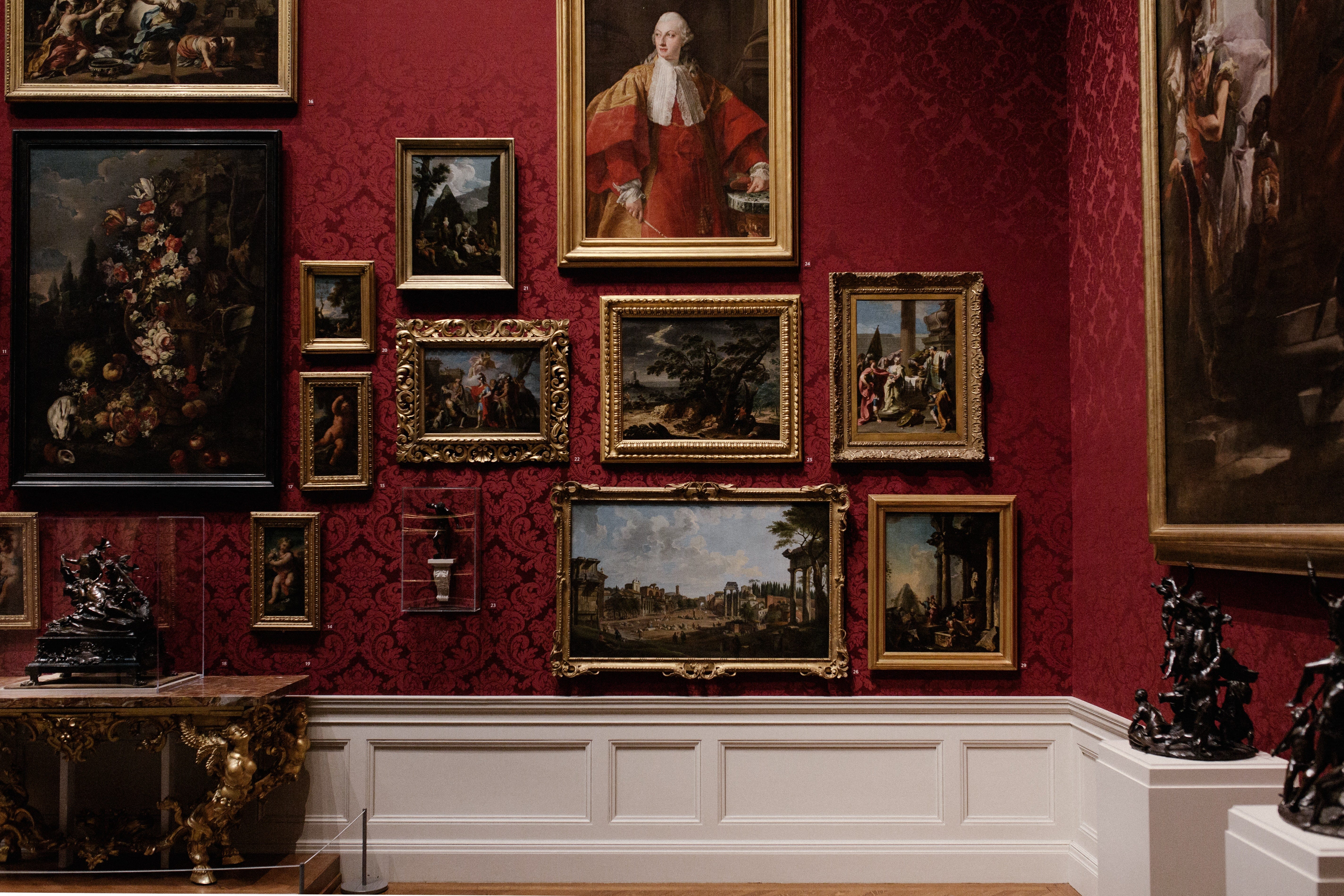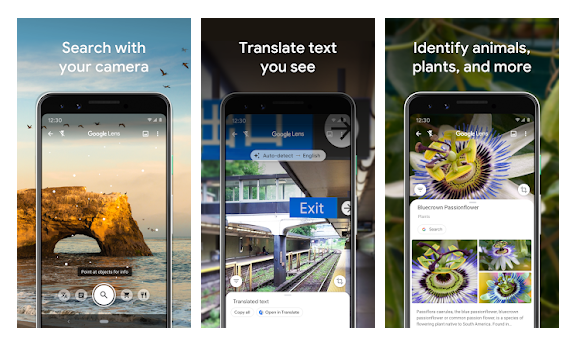The Art of Visual Search and Image Recognition in Marketing
The Art of Visual Search and Image Recognition in Marketing

 https://miro.medium.com/max/1104/1*XhdLPXddq5Q64icJgRbQqQ.jpeg 552w, https://miro.medium.com/max/1280/1*XhdLPXddq5Q64icJgRbQqQ.jpeg 640w, https://miro.medium.com/max/1456/1*XhdLPXddq5Q64icJgRbQqQ.jpeg 728w, https://miro.medium.com/max/1632/1*XhdLPXddq5Q64icJgRbQqQ.jpeg 816w, https://miro.medium.com/max/1808/1*XhdLPXddq5Q64icJgRbQqQ.jpeg 904w, https://miro.medium.com/max/1984/1*XhdLPXddq5Q64icJgRbQqQ.jpeg 992w, https://miro.medium.com/max/2160/1*XhdLPXddq5Q64icJgRbQqQ.jpeg 1080w, https://miro.medium.com/max/2700/1*XhdLPXddq5Q64icJgRbQqQ.jpeg 1350w, https://miro.medium.com/max/3240/1*XhdLPXddq5Q64icJgRbQqQ.jpeg 1620w, https://miro.medium.com/max/3780/1*XhdLPXddq5Q64icJgRbQqQ.jpeg 1890w, https://miro.medium.com/max/4320/1*XhdLPXddq5Q64icJgRbQqQ.jpeg 2160w, https://miro.medium.com/max/4800/1*XhdLPXddq5Q64icJgRbQqQ.jpeg 2400w" sizes="100vw" />
https://miro.medium.com/max/1104/1*XhdLPXddq5Q64icJgRbQqQ.jpeg 552w, https://miro.medium.com/max/1280/1*XhdLPXddq5Q64icJgRbQqQ.jpeg 640w, https://miro.medium.com/max/1456/1*XhdLPXddq5Q64icJgRbQqQ.jpeg 728w, https://miro.medium.com/max/1632/1*XhdLPXddq5Q64icJgRbQqQ.jpeg 816w, https://miro.medium.com/max/1808/1*XhdLPXddq5Q64icJgRbQqQ.jpeg 904w, https://miro.medium.com/max/1984/1*XhdLPXddq5Q64icJgRbQqQ.jpeg 992w, https://miro.medium.com/max/2160/1*XhdLPXddq5Q64icJgRbQqQ.jpeg 1080w, https://miro.medium.com/max/2700/1*XhdLPXddq5Q64icJgRbQqQ.jpeg 1350w, https://miro.medium.com/max/3240/1*XhdLPXddq5Q64icJgRbQqQ.jpeg 1620w, https://miro.medium.com/max/3780/1*XhdLPXddq5Q64icJgRbQqQ.jpeg 1890w, https://miro.medium.com/max/4320/1*XhdLPXddq5Q64icJgRbQqQ.jpeg 2160w, https://miro.medium.com/max/4800/1*XhdLPXddq5Q64icJgRbQqQ.jpeg 2400w" sizes="100vw" />Visual Search and image recognition are two features that could be proven essential in technology in the near future. With the aid of artificial intelligence and its algorithms, these features can improve customer experience to a great extent.
Moreover, let’s see why artificial intelligence is so important to visual search, and how strong is its impact on marketing. According to ViSenze, an AI startup company, a percentage of 62% of millennials have stated that one of their main desires for a great digital shopping experience is the ability to have visual search. Apart from that, a percentage of 80% is discovering products while on the go. Visual content is more effective in many ways, as 90% of the information that is transmitted to our brains is visual. Therefore, it is clear to see that marketing is in need of searching for more ways to coexist with artificial intelligence in the future.
In order to understand why marketing needs visual search, it is important to know what exactly is visual search. Visual search is an engine that searches images and patterns based on an algorithm, that can identify an item within the picture and propose the results to the user.
This is an essential tool for eCommerce brands because the search results could show the user’s items on the first page. Without artificial intelligence, the visual search engine would not be capable of finding shapes and patterns. Because of AI’s metadata, which can identify colors, content, and the composition of an item, the engine can find similar results to the image that a user is searching.

 https://miro.medium.com/max/1104/1*kTg4_em42dPCdlCLbVl_Zw.png 552w, https://miro.medium.com/max/1132/1*kTg4_em42dPCdlCLbVl_Zw.png 566w" sizes="566px" />
https://miro.medium.com/max/1104/1*kTg4_em42dPCdlCLbVl_Zw.png 552w, https://miro.medium.com/max/1132/1*kTg4_em42dPCdlCLbVl_Zw.png 566w" sizes="566px" />Visual Search is based on neural networks that can use Machine Learning techniques to learn new content, but also evolve on their own. In order to search for more relevant images to what the user is searching, but also a better resolution, analysts use convolutional neural networks (or CNN). These networks are being put together next to each other, in every pixel of the image.
Companies that have a large data volume are not just doing a visual search, but are also putting in categories, according to their functionality, all the information that they receive from an image. Apart from searching in browsers, companies are using new techniques, like communicating with chatbots by sending images or combining images and text for a more extensive search. Some of the most popular visual search tools are Google Lens, Pinterest Lens, Bing Visual Search, Snapchat Camera Search, Amazon Image Search,
Over the past few years, artificial intelligence and machine learning have evolved rapidly in the field of visual search but also image recognition. AI can identify faces on social media, but also compare them, and make a database. Facebook, for example, has 98% success in image recognition, according to the company. It is important to note that artificial intelligence divides images into many different categories.
One of the most important of these categories is “Optical Character Recognition”, or OCR. OCR can convert images of scanned or handwritten images into digital text. A coding model can be created as soon as many images are collected. Then the company can use this model in order to use and identify even more pictures.

 https://miro.medium.com/max/1104/1*gCBBn6A0i6TzErbZGNktBg.jpeg 552w, https://miro.medium.com/max/1280/1*gCBBn6A0i6TzErbZGNktBg.jpeg 640w, https://miro.medium.com/max/1400/1*gCBBn6A0i6TzErbZGNktBg.jpeg 700w" sizes="700px" />
https://miro.medium.com/max/1104/1*gCBBn6A0i6TzErbZGNktBg.jpeg 552w, https://miro.medium.com/max/1280/1*gCBBn6A0i6TzErbZGNktBg.jpeg 640w, https://miro.medium.com/max/1400/1*gCBBn6A0i6TzErbZGNktBg.jpeg 700w" sizes="700px" />In order to collect and organize data, there is a procedure that the visual search engine has to follow. First, the engine identifies if an image is a raster or a vector image. Raster is an image that consists of pixels that are organized into rows and columns (or a grid). Vector is an image that can be defined in terms of points on a Cartesian Plane, which is connected by lines and curves to form polygons and other shapes. It can be scaled up or down to any resolution with no aliasing.
The engine takes the image, simplifies it according to its shapes, and categorize it, based on programs such as SURF and HOG. Then it selects vectors as the intersection points for the classification. By following this pattern it starts to separate images that have totally different resolutions.
In order for the classification to be successful, neuronic networks should be able to work by using algorithms for vectors, faces, location, etc. Then, there comes the “easy part” of the identification process. Training data find an image from the database that has the closest analogies with the test data the user has asked for. For example, test data can identify if an item is e.g. a shirt, test data will categorize if the image is a shirt or not, in a process that needs just a few milliseconds to be done. Image recognition can be used in face and product identification, text reading, and logos, among others.
This tool is essential in marketing because image recognition can save a lot of time. Instead of searching manually for hundreds of images and campaigns, AI can find millions of images according to the users' preferences in seconds. As a result, companies can have a great advantage, as they can monitor trends in just a matter of seconds, but also be ahead of the competition.
With visual content, marketers can now find in greater detail the audience’s preferences, just by analyzing their insights. There won’t be a need to rely on demographics that much, but they can start paying attention to the user’s lifestyles, style, and psychographics.
Apart from that, they can now figure out much easier which brands are more successful, by searching the brand’s visual content and social media marketing. Since 90% of the transmitted information on our brains is visual, marketers that are doing a visual search can find better images that can reveal people’s behavioral triggers. As a result, they will be able to learn more about their audience and launch better campaigns in the near future.
Even though it seems that visual search and image recognition will be very important technologies in the near future, they still have their disadvantages. Sometimes, even if the keyword is specified, there might be some minor troubles and the search will be a failure. Also, sometimes the metadata isn’t good enough to identify the product. And still, it seems that text-based searches are more popular than video, or voice searches.
Even though we can say that visual technology hasn’t reached its peak yet, it seems that in the long future more and more marketers will be using this kind of technology to maximize their brands success.
Views: 153
Tags:
Welcome to
THE VISUAL TEACHING NETWORK
About
© 2025 Created by Timothy Gangwer.
Powered by
![]()
You need to be a member of THE VISUAL TEACHING NETWORK to add comments!
Join THE VISUAL TEACHING NETWORK